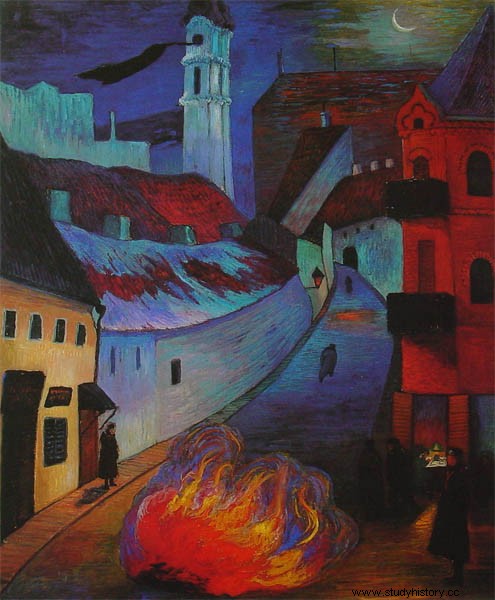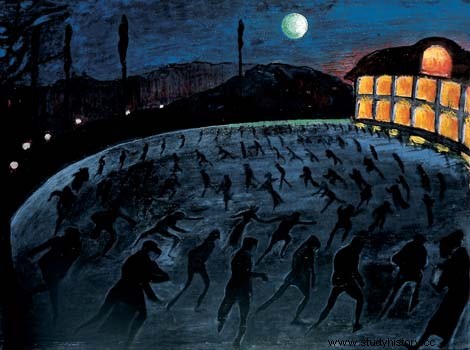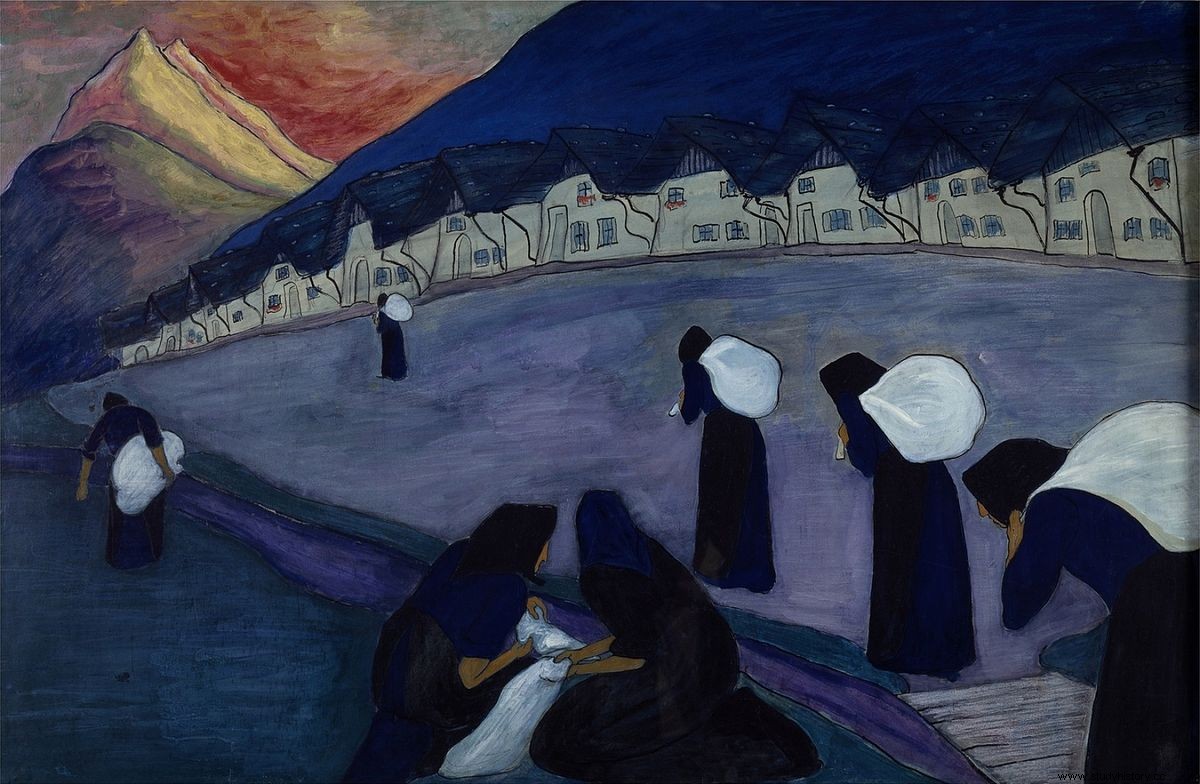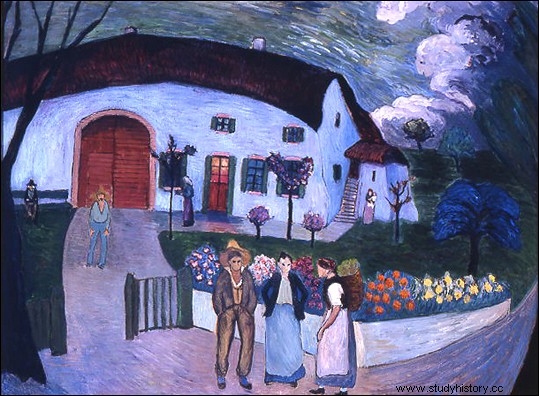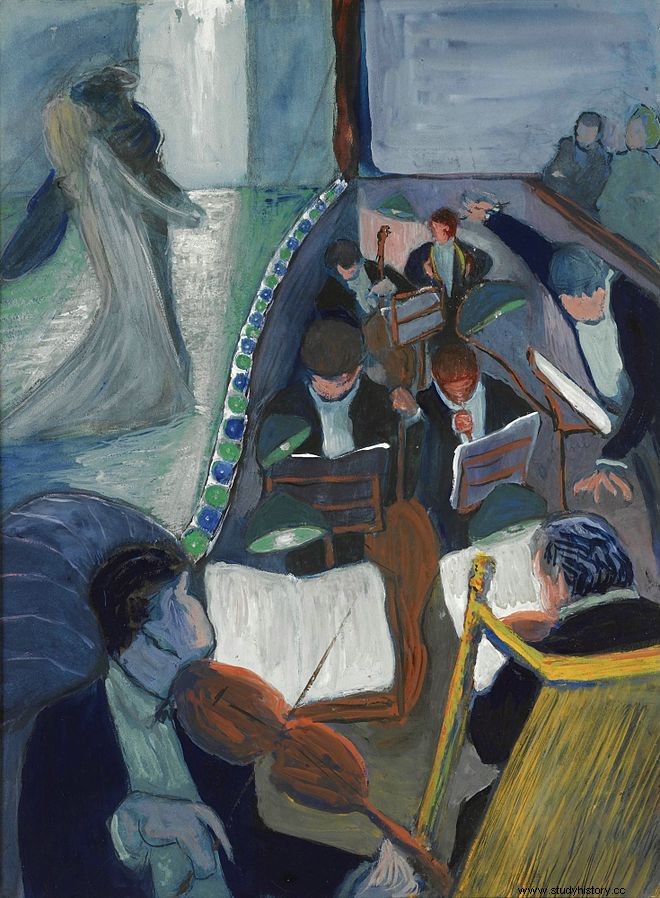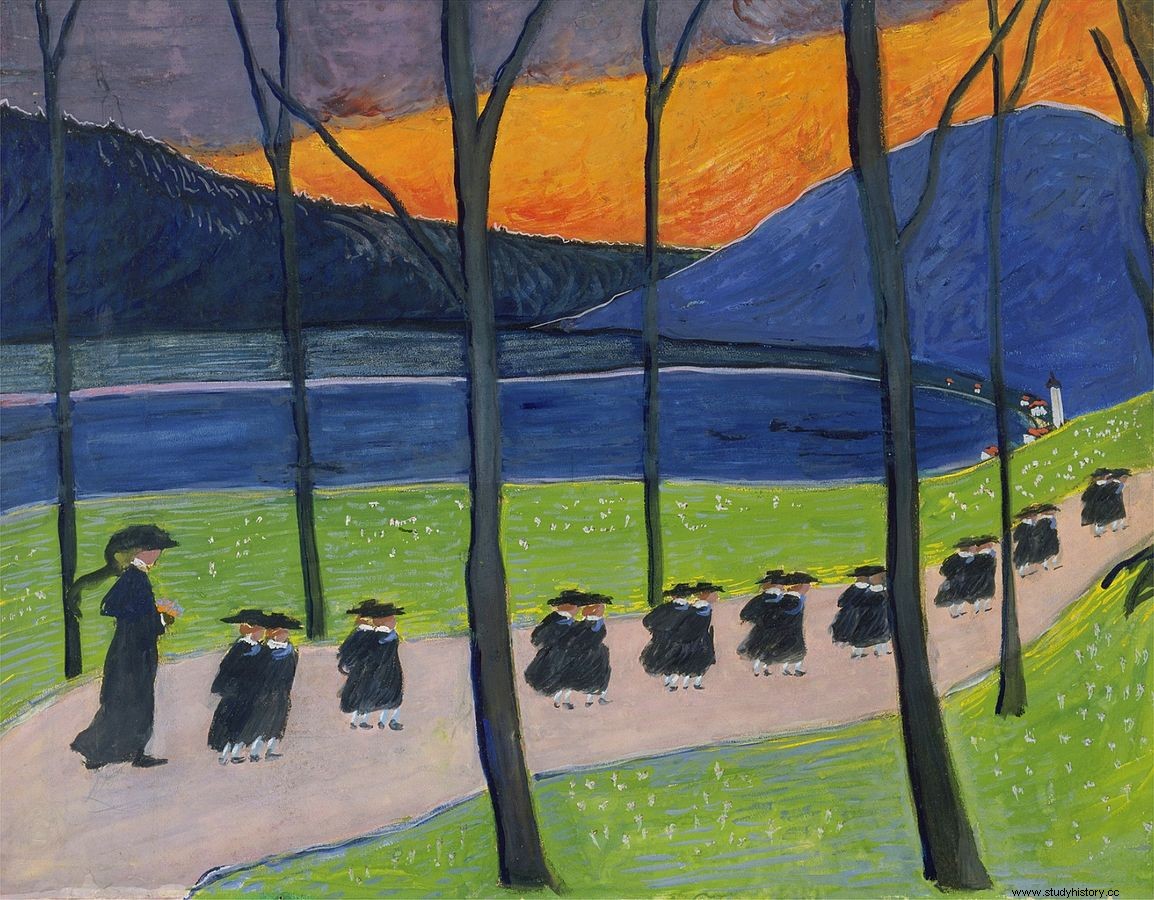Russian-Swiss painter Marianne von Werefkin (1860 – 1938) strives to innovate and express sincere emotions through her art. In an expressionist style, she paints landscapes, human figures and scenes of everyday life.
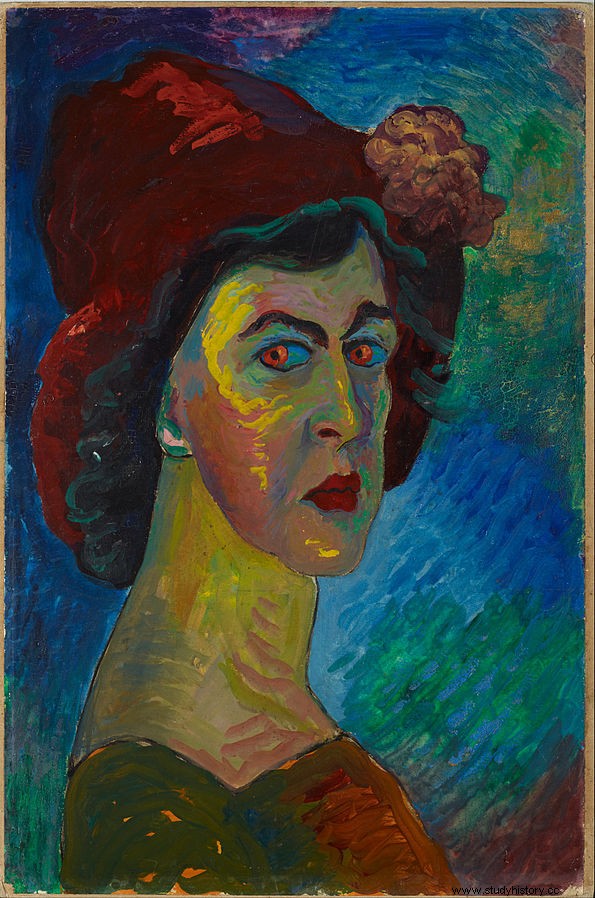
A young painter
Daughter of the commander of the regiment of Yekaterinburg (a Russian city in the Urals), Marianne von Werefkin was born on September 11, 1860 into an aristocratic family. One of the favorites of the Tsar, her father was appointed eight years later to Vilna (now Vilnius) and little Marianne grew up in present-day Lithuania, then part of the Russian Empire.
Marianne receives an aristocratic education. An icon painter, her mother encourages her daughter to develop her own artistic talents. The child quickly proved to be gifted, and her parents enrolled her in a drawing school at the age of 14. At 20, Marianne became a pupil of Ilya Repin, the greatest realist painter in Russia.
Her efforts and progress were abruptly undermined when, in 1888, she accidentally shot herself in the right hand during a hunting accident. Seriously injured, she needed a long period of rehabilitation before she could learn to draw and paint again with her right hand. Her efforts paid off:while the accident could have put an end to her career, Marianne was able to resume her art. Gradually, she moved away from the realism of her master and made her own name as an artist.
Alexej von Jawlensky
In 1892, Marianne von Werefkin met Alexej von Jawlensky, a 27-year-old painter from the minor military nobility and a pupil of Ilia Repin like her. The two quickly form a strong and lasting relationship; Marianne feels a certain fascination for Alexej. When he was demobilized in 1896, she left Russia with him to settle in Munich.
Thanks to her father's inheritance, Marianne rents an apartment in the artists' quarter in Schwabing. She and Alexej continue their studies at the private school of Anton Azbé. Marianne also makes her home a living room at the heart of a bubbling artistic and cultural activity. Between school and the salon, Marianne and Alexej meet many artists including Gabriele Münter and Vassily Kandinsky.
Devoted to her living room and Alexej's career, Marianne stopped painting for almost ten years. The diary she kept at the time explains this period of artistic deficiency. At the time, Marianne was indeed going through a period of personal, identity and artistic crisis. Not recognizing herself in realism or symbolism, she believes that art must renew itself in depth and explore sincere emotions. In her eyes, only a man can revolutionize art and it is in Alexej that she hopes for this revival.
The New Association of Munich Artists
In 1903 and 1905, Marianne von Werefkin discovered in France the art of Henri Matisse, Paul Gauguin, and the Nabi post-Impressionist movement. Their use of colors inspires her for the renewal and “emotional” art she aspires to. Disappointed by Alexej, by his art and by his infidelity, Marianne resumed painting in 1906. Using gouache and tempera (a painting technique based on an emulsion), she explored the strength of color as well as the rapprochement of arts. She thus produced many sketches related to dance, to which she lends great expressive power. From 1907, she produced her first expressionist works.
In 1909, in her living room, she founded with Alexej, Gabriele Münter, Kandinsky and others the New Association of Munich Artists (NKV), a group of artists breaking away from the Impressionist. The group held its first exhibition in Munich in December of the same year. Dissension within the circle of artists will, however, cause it to burst quickly; he gave birth to the group Le Cavalier Bleu (Der Blaue Reiter) in 1912.
The Big Dipper
When the First World War broke out, Marianne von Werefkin and Alexej moved to Switzerland, near Geneva and then to Zurich. In 1918, they separated and it was alone that Marianne settled in Ascona, a small fishing village on the shores of Lake Maggiore in Switzerland, in full transformation into an artistic and cultural meeting place. In 1924, she created the artistic group Großer Bär (the Big Dipper) there. She continued her career there until her death.
In Ascona, Marianne painted many landscapes of Swiss mountains in the expressionist style, but also figures of everyday life, women, passers-by, workers.
Marianne von Werefkin died in Ascona in February 1938.

